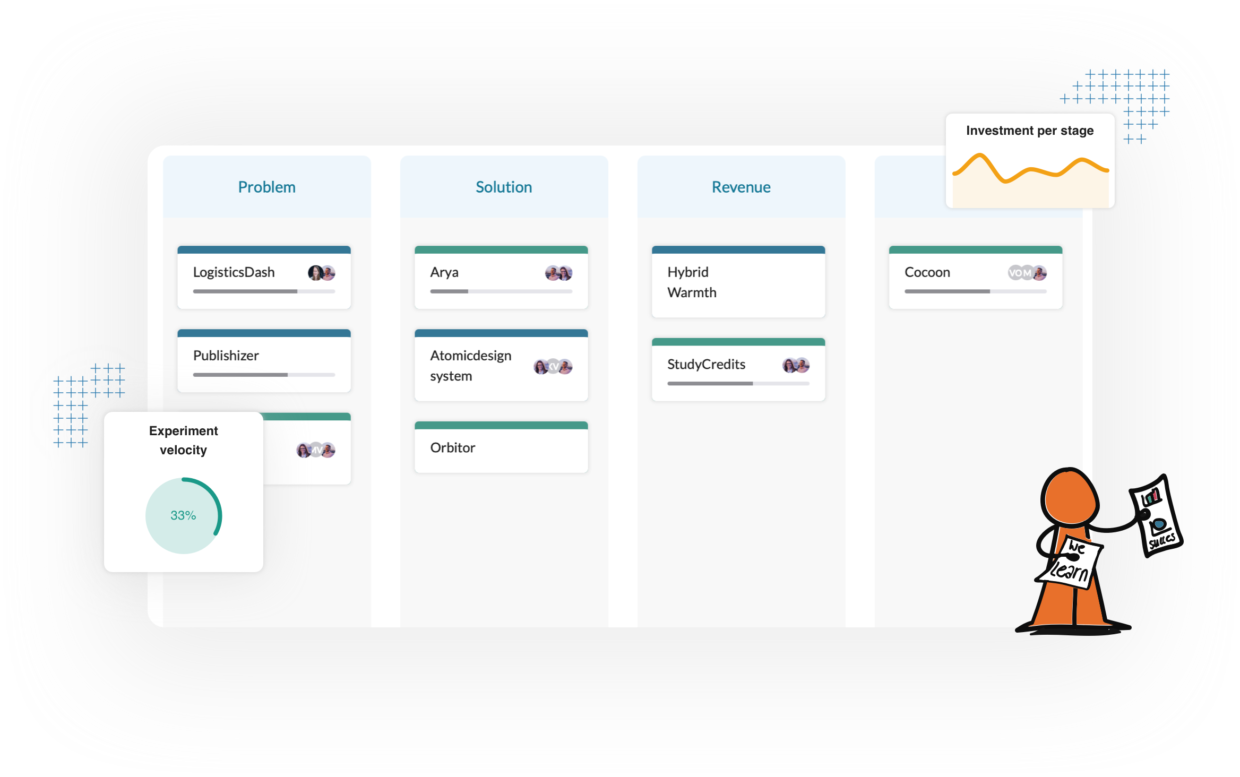The 5 conditions for professionalizing innovation
Table of Contents
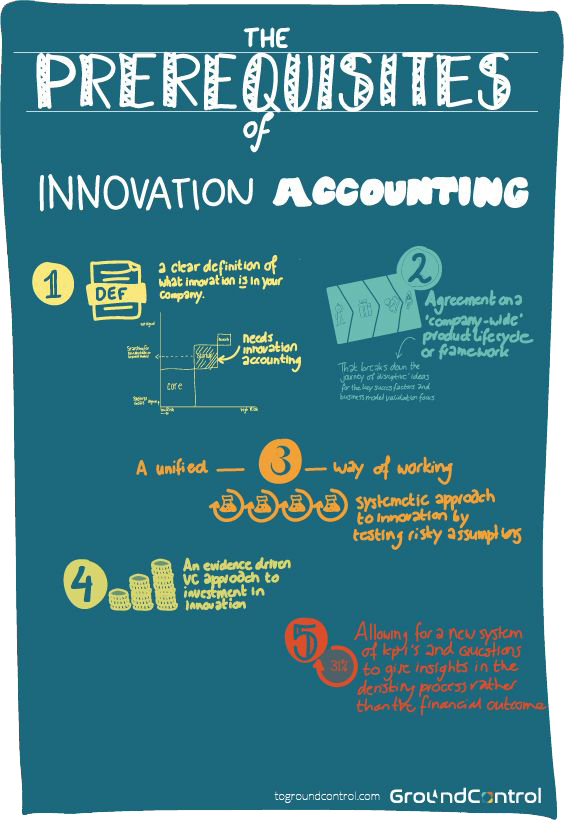
If you want to allow innovation to blossom in your company, you need a separate corprate governance system to support it. This will allow you to search for new business models in a company that is designed to be a high-performing way of executing what you already do, and which is structurally adverse to anything that could disrupt that.
This tension creates a need for different processes, innovation KPIs and ways of working to allow disruptive innovation to succeed in an environment that is designed to support the optimization of existing business models. This current ‘core’ system is there to sustain and execute your current processes. It can, by its nature, never allow high-risk, high opportunity projects simply because the processes are intentionally set up to exclude risk in the first place.
Successfully professionalizing or scaling your internal innovation efforts is dependent on creating a new system for these kinds of initiatives. Building — and, more importantly, — embedding a professional second system that supports disruptive innovation in your organization will make innovation less dependent on the opinion of a single leader. Instead, you make it a company-wide capability. Thus, you ensure continuity and more chances of success over time.
Building this new system is hard and can be a lot of work. To ease this process, I’d like to share the five conditions that you need to have met in order to build this new system.
1. A clear understanding of what kind of innovation falls under what system in the company
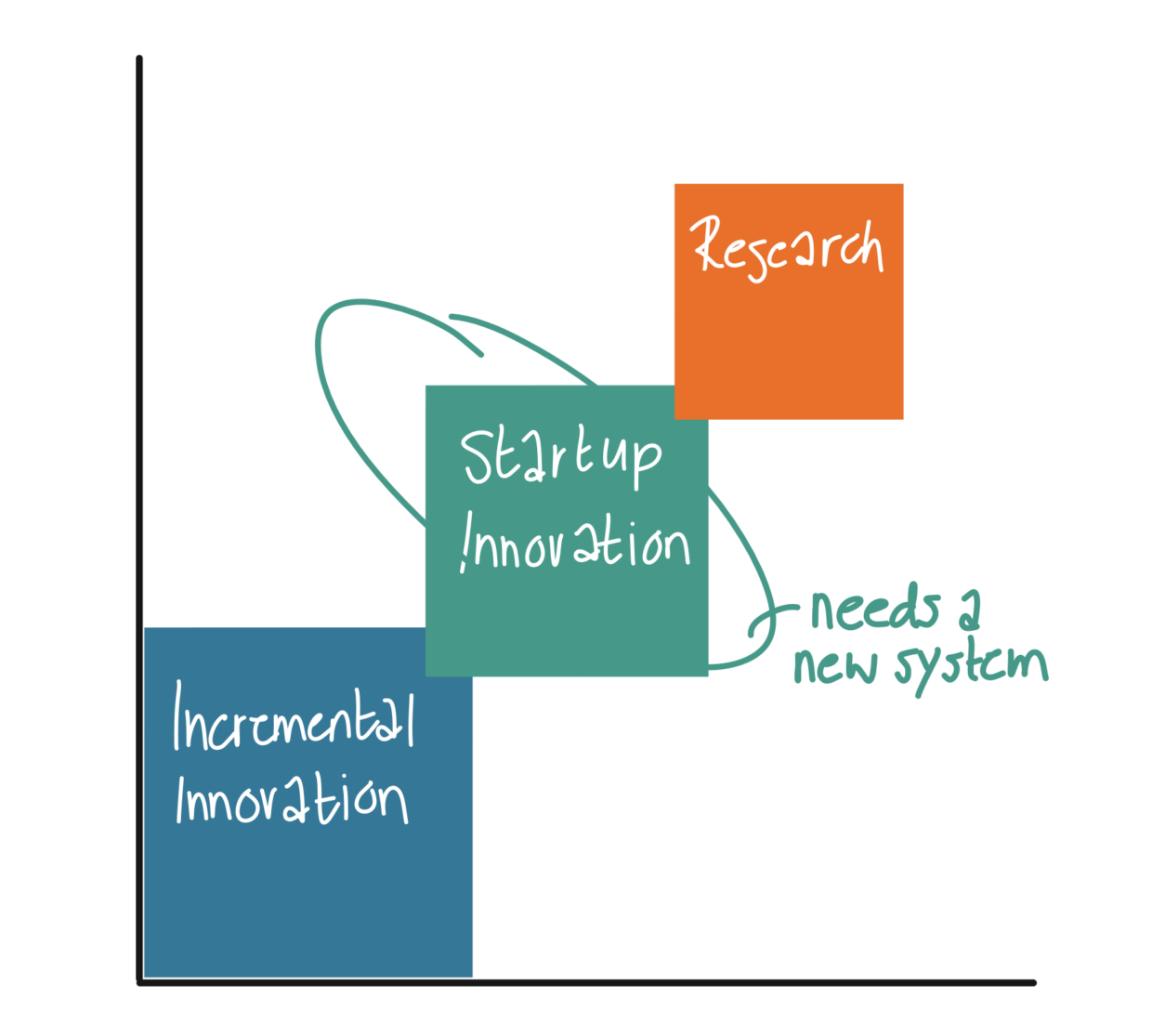
The first — and most important — condition is having a clear definition of innovation within your company.
Innovation is a catch-all phrase for lots of different things:
- Digital transformation
- Customer centricity
- Culture change.
These are all answers to the question: “What does innovation mean in your company?” If it is all these different things at once, how do you know who is responsible or who should be involved? More importantly, how do you know what to do, or measure when it is successful?
Your company is governed by a system of processes, rules, and KPIs. Any innovation that contributes to, or adheres to, the current business goals of the organization can be dealt with from within the current system. Digital transformation is a good example of this as it is improving current services into more customer-centric ones.
But there is one type of innovation that cannot succeed under the current system and needs a new system of processes, rules, and KPIs. This is high risk and high uncertainty factor innovation, that does not directly contribute to the current business goals. Instead it aims to find new businesses in the near future. This is the innovation type that needs a new system to sustain it.
It is important that your company recognizes that there is a need for two separate systems and that there is a clear understanding within the company which initiative falls under which system. If that’s clear everyone, from stakeholder to innovation team member, actually knows what to do and what to expect once they interact with these initiatives.
2. Agreement on a ‘company-wide’ product lifecycle or framework

Developing a product lifecycle framework is an important step in setting up your new system. Because of the inherent uncertainty of such initiatives, it makes sense to break the journey from a great idea to a validated business model up into phases. These steps or stages help identify the risk level of the initiatives and your different needs in each of the stages. We usually identify 4 stages (or 5 if you count the stage where the initiative has become business as usual and can be governed by the existing core system).
At GroundControl we like to call these four stages by their focus areas:
- Problem: Prove there is a problem
- Solution: Prove your solution solves that problem.
- Revenue: Prove your customer will pay.
- Scale: Prove your business model can scale.
[convertkit form=2570335]
3. A unified way of working or a systematic approach to innovation

In addition to this framework, you have to create a new way of working. A unified systematic approach to innovation. Searching for and de-risking new business models is something that we see works best with an approach that is focussed on learning and testing.
Although innovation is a creative and entrepreneurial process, providing a structure helps to focus on progress, both for the team as well as managers. A structure will also prevent teams from falling back into their old ways of working.
A systematic and unified way of working also allows for teams to be compared to one another. Once you have more initiatives running this is something that will become more and more important. If you want to start making decisions in a portfolio of initiatives, comparability becomes a necessity.
4. A new set of KPI’s that reflect the search rather than financial outcome
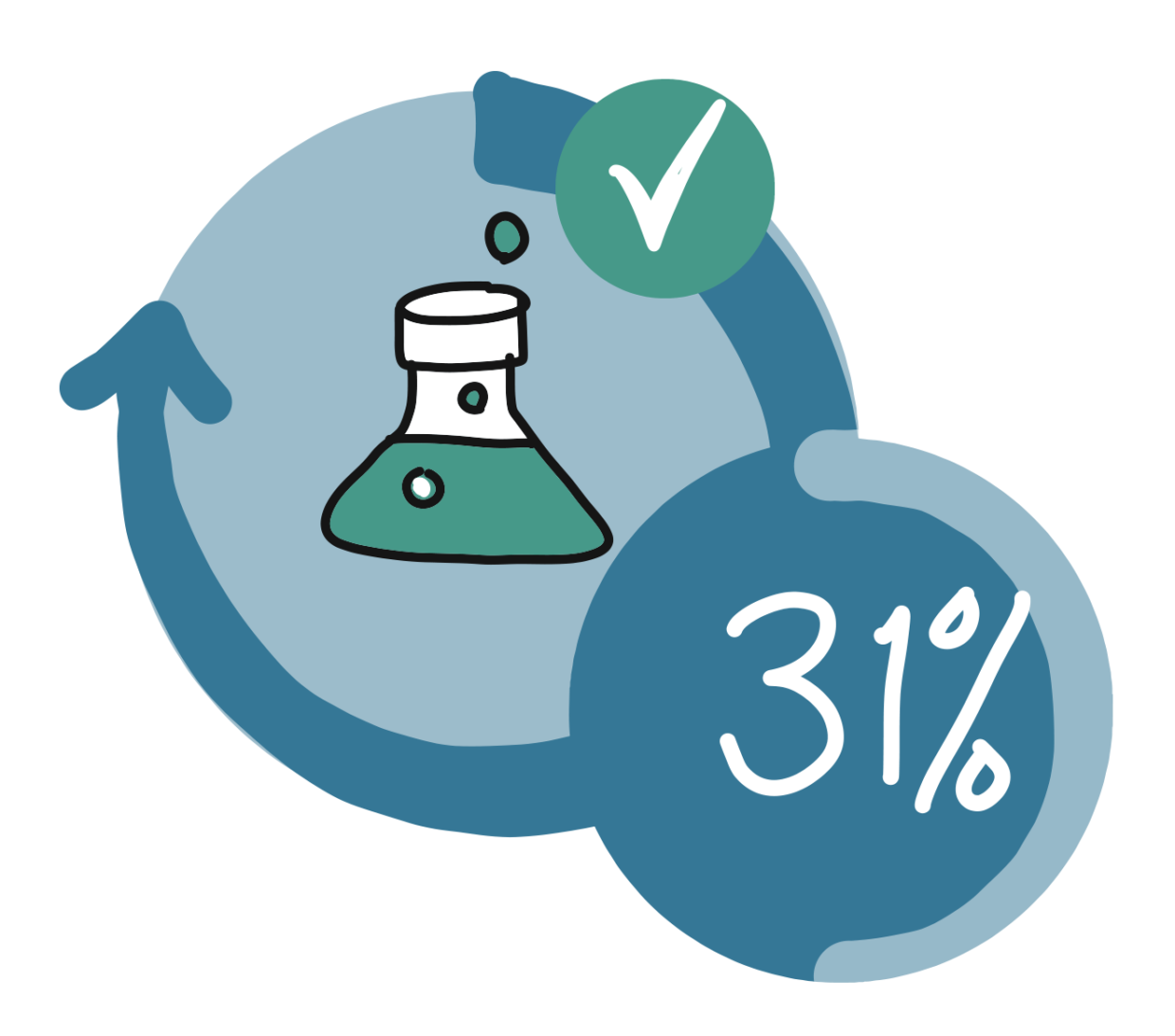
Once you have determined a unified way of working, you can start implementing new and more relevant KPIs than those used in the current system, which are rooted in financials. For the new system, the KPIs should reflect the exploratory nature of the initiatives:
- “Are the teams learning?”
- “Can we say with confidence that they are de-risking their business model?”
These are the questions you need answers to, so you can judge if progress is being made. Instead of calling this Accounting, as we do in the core system, we call this Innovation Accounting.
Innovation Accounting consists of different layers of interconnected data:
- There are innovation KPIs that the teams need to understand if they are moving forward with their idea.
- There are KPIs for the manager to see if the teams are focussed on learning and de-risking.
- Lastly, there are KPIs to compare initiatives over the different stages.
These layers of KPIs are passing on information from one layer to the other, so it is therefore important to start with the teams. Without them there is nothing to look at in the first place. So ask yourself what it is that you need to steer to improve the success of the teams and work from there.
5. A VC-approach to investment in innovation

If you want to start investing more in innovation, you have to adopt a VC-mentality to investing in innovation in your company. This means treating these investments as high-risk investments. Venture Capitalists invest only a little money in the first, highly risky stages, and invest more in those initiatives that have proven their business model enough to move ahead into less risky stages. Starting with a lot of little bets and ending up, over time, with a few less risky, high potentials that you can double down on.
Another important aspect of Venture Capitalist investment is timelines. Where a Corporate Board is used to make decisions and want to see a return in a year, the timelines for a return on a VC fund are around 12 years. Reaching product/market fit for one initiative may already take up to 24 months.
Invest in people that understand how to manage this, and know what questions you can ask in each of the stages of the framework.
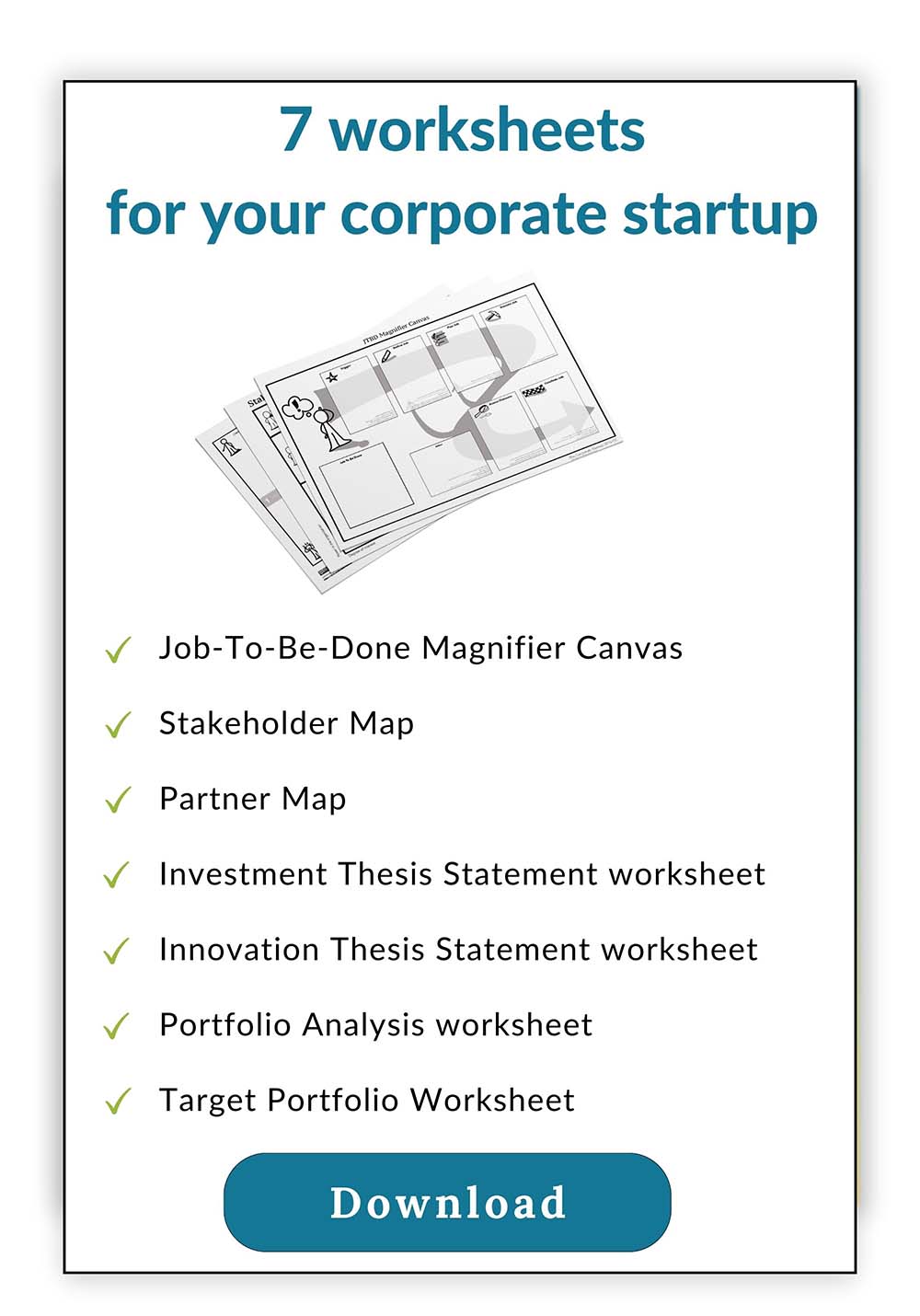
[convertkit form=5141483]
Laying the groundwork
All of these conditions are interconnected. The nature of your company will determine which of them it makes sense to set up first. That said, being able to identify which initiatives need what system to succeed is usually a good first step.
Keep in mind that sometimes you have to implement parts of these conditions in unison to test the interaction in parts of the organization, rather than implementing them separately one by one company-wide. Building and embedding these elements within your organization takes time. It is a transformation in of itself, but the more stakeholders are involved in setting up the system, the better. Implementation starts with actually doing things and showing results, over and over again.
[convertkit form=2602167]

Esther Gons is the award-winning author of The Corporate Startup & Innovation Accounting. Winner of the 2022 Golden Axiom Business Book Award, 2019 Golden Axiom Business Book Award, and the 2018 Management Book Of The Year Award. She is an expert in Innovation Accounting, Innovation Strategy and Portfolio Management.
